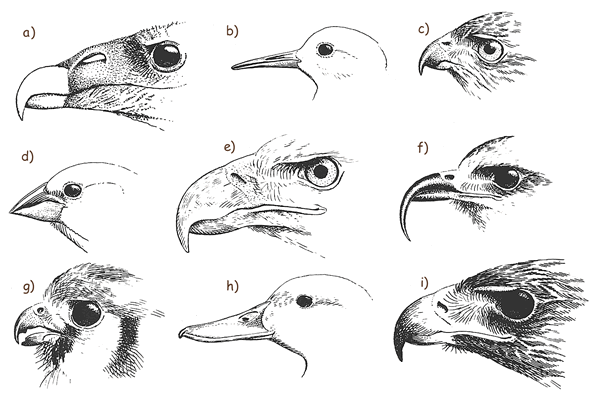Offer
Provide additional details about the offer you're running.
Provide additional details about the offer you're running.
Provide additional details about the offer you're running.

There are many different types of beaks on birds and evolution has played a big part in developing the great variety of beaks adapted by their varied food habits. All of them, however, arise in fundamentally the same way. Although beaks vary significantly in size, shape, color, and texture, they share a similar underlying structure.
Bird beaks are essentially a compact layer of epidermal cells molded around the bony core of each mandible, the upper and lower jaws. In nearly all birds, unlike mammals, both upper and lower jaws can move.
Different types of birds have different shapes of beaks. Here are some examples:
Seed Eaters such as grosbeaks or finches have short, thick bills that can crush hard seed.
Warblers, Orioles, Vireos are Foliage Gleaners, which means they tend to have longer, thin beaks that can reach farther to pick an insect off a leaf.
Ground Probers such as the Starling have pointed thin beaks that can go into the ground with ease.
Swallows, flycatchers, nighthawks all have flat beaks as they are Flying Insect Eaters. Their beaks have a broad base, boasting an amazing natural insect-catching design.
Of course, we cannot forget the birds of prey. The beaks of raptors such as hawks, falcons and accipiters have sharply hooked beaks which they use to tear apart animal flesh.
The American Woodcock uses its long straight beak to get worms out of the ground. The tip of its upper mandible is flexible, and when underground can move away from the lower mandible in order to grab the worm.
And lastly, wading birds like herons and egrets have long beaks that enable them to make sudden, long jabs into the water for fish, frogs, crayfish, and snakes.
The beak, bill, or rostrum is an external anatomical structure of birds which is used for eating and for grooming, manipulating objects, killing prey, fighting, probing for food, courtship and feeding young. Whatever the purpose they are all different.
Hence, knowing about a bird’s beak can help when buying food for your backyard friend. When purchasing food, keep the type of bird you would like to attract in mind and create the perfect environment for their habitat. Please visit our store for more information on bird food and houses in order to attract the right type of bird!
High Quality Blend